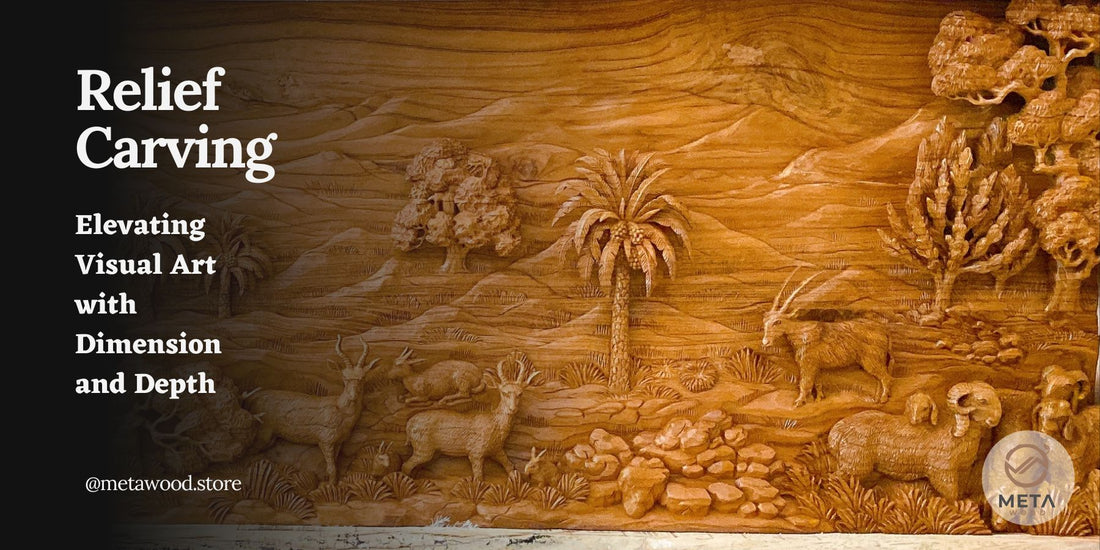The Heartbeat of Visual Art: A Reflection of Identity and Experience
Art is inherent in almost every aspect of human life. The term "art" originates from the Latin word "ars," which means "technique, craft." Etymologically, art can be interpreted as a skill in creating objects or making something. Throughout history, art has been present in countless periods of human civilization, showcasing an immense diversity of expressions.
One branch of art that plays a significant role in human life is visual art. Visual art refers to the art form that focuses on visual elements, creating arrangements, compositions, or unity of visual elements. In visual art, there are elements such as lines, planes, shapes, space, colors, and textures. These elements come together to form a composition or the structure of a visual artwork.
Diving into Visual Art - Exploring Dimensions and Forms
Visual art, based on its dimension, is divided into two types:
- Two-Dimensional Art: This type of art has two dimensions, length and width, and is essentially flat without thickness. It can only be viewed from one direction. On a flat surface, marks are made that lack depth, except for an illusion of depth.
- Three-Dimensional Art: This type of art has three dimensions, length, width, and height (thickness), commonly referred to as three-dimensional art. Three-dimensional art can be observed from various angles due to its length, width, and height.
In essence, humans live in a three-dimensional world because what is seen is not just a flat image with length and width, but also inhabited space. To understand the three-dimensionality, one must view it from different angles and distances, gaining a comprehensive understanding of its depth.
Based on its nature, visual art is divided into two types:
- Fine Art: Fine art aims to fulfill spiritual needs and serves as an expression of the artist's desires for aesthetics. These artworks are created to be appreciated for their beauty and uniqueness without considering practical functionality. During their creation, artists do not intend for their works to serve any purpose other than being enjoyed for their beauty and lacking practical utility.
- Applied Art: Applied art is created to fulfill practical needs in human life. These artworks always consider market demands and aesthetics that align with their intended function and purpose, without sacrificing their beauty.
Unveiling Relief as Visual Fine Art
The term "relief" finds its origins in the Italian word "relievo," which translates to "raising" or "elevation." It represents a form that stands out from its background, gracefully positioned on a flat surface. Always having a background, relief art showcases raised elements meticulously placed on a surface. This captivating wall art can be brought to life through two methods: carving techniques or modeling sculpting.
Carving entails crafting intricate shapes from existing solid materials like stone, bone, ivory, or wood by skillfully scraping or cutting with various tools. On the other hand, modeling is an additive process, where flexible materials such as clay, wax, or plaster are meticulously built, shaped, and molded into their final forms. The art of carving is renowned for its complexity and precision, given its subtractive nature with limited room for errors.
Relief art emerges as a powerful medium of expression, allowing artists to pour their emotions and thoughts onto a flat surface. They skillfully intertwine lines, planes, shapes, colors, textures, and space based on personal observation and aesthetic experiences, crafting decorative forms reminiscent of raised paintings. Creating awe-inspiring relief artworks demands a high level of expertise and skill. Carvers must master their craft with precision to bring forth breathtaking depth and detail. The process requires boundless patience and meticulousness, with each stage receiving profound attention to ensure perfection in every aspect of the artwork.
Beyond visual allure, relief art embodies the artist's ability to convey stories and emotions through form and texture. Each relief carving becomes a narrative that breathes life into the stories behind it, encouraging viewers to immerse themselves in the messages conveyed by the artist. With each stroke and delicate detail, relief carvings etch themselves into memory as unforgettable and highly prized works of art.





